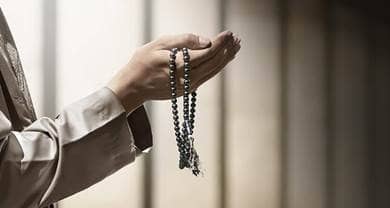- Trending:
- Pope Leo Xiv
- |
- Israel
- |
- Trump
- |
- Social Justice
- |
- Peace
- |
- Love

RELIGION LIBRARY
Shia Islam
Gender and Sexuality
The role of women and men in Shiite communities is as diverse as among those of Sunnis. Much of the daily lives of Shiite women depends on the general living conditions in their environments rather than a specific Shiite doctrine or culture. The following aspects, however, deserve to be highlighted:
Shiite sacred narratives assign prominent roles to two female figures, Fatima Zahra (daughter of Muhammad, wife of Ali and mother of Hasan and Husayn) and Zaynab, the daughter of Ali and Fatima who was present at Karbala and led with the other women and children as a prisoner to Damascus. The symbolism of Karbala is used to promote certain ideals of femininity, such as the task to care for the young in the Iranian context, but can be interpreted in different ways. In Lara Deeb's study (An Enchanted Modern: Gender and Public Piety in Shi'i Lebanon, Princeton, 2006), Zaynab is a revolutionary figure for the pious Shiite women of south Beirut who represents her faith and family in the public sphere.
According to some traditions Fatima is present during Muharram rituals, but Zaynab also offers a point to focus on during these rituals for women who relate their difficulties in everyday life, often arising from socio-economic circumstances, to her suffering. Likewise, the Gujarati community from East Africa in Canada whose use of the Karbala symbolism has been examined by Vernon James Schubel ("Karbala as Sacred Space among North American Shi'a: 'Every Day is Ashura, Everywhere is Karbala'," in Making Muslim Space in North America and Europe, ed. Barbara Daly Metcalf, Berkeley 1996, 186-203) has called the main hall of their community center Zaynabiyya—the Prophet's granddaughter witnesses the rituals of the community just as the historical Zaynab witnessed the events in Karbala.
The taziyah plays are another opportunity for promoting certain gender ideals. Actors, however, are typically male, even for the female characters. The male protagonists offer an ideal of manly behavior for the young actors and boys and teenagers in the audience. Even though the historical figures were already advanced in years when they took part in rebellions—Ali was 60 when he became caliph, Husayn was in his 50s when he was killed—in the plays they are presented as young men and thereby offer a model to those more likely to be actively and physically involved in political confrontations. The manly virtues Ali and Husayn embody are also expressed in iconography where Ali is often shown with his sword Dhu al-Fiqar, which he inherited from Muhammad. In posters showing scenes from Karbala, Husayn too is shown as a young man with a black beard.
In Iran during the war with Iraq (1980-1988), unmarried male martyrs were symbolically married through marriage chambers (hejleh) erected in the public sphere. The Iranian artist Khosrow Hassanzadeh has used this theme in his recent piece Takhti: a modern Iranian hero (acquired by the British Museum), which shows the wrestler Gholamreza Takhti (d. 1968) who is cherished in Iran for his courage, fairness, and generosity, ideal qualities of the young man. As a wrestler, Takhti belonged to a tradition that had its roots in pre-Islamic Iran, but whose rituals became intertwined with Shiism in the Safavid period. Takhti referred to Ali with his courage and trust in God during a fight as his model.
A peculiarity of Imami law is muta or short-term marriage for the sake of pleasure rather than procreation, the main purpose of a permanent marriage. In this arrangement, a man and an unmarried woman agree on a contract that stipulates the duration of the marriage (which can be anything from a few hours to many years) and a bride price. The man has no financial obligations beyond this payment, even in the case of pregnancy. The marriage ends automatically at the end of the agreed upon period. The practice probably dates back to pre-Islamic Arabia, but was abolished by the second caliph, Umar. The relevant passage in the Quran (4:24) is one of those that, according to early Shiite exegetes, had been changed by Ali's enemies. Sunnis reject this kind of marriage as prostitution, and in Shiite communities too it bears such a stigma. Further peculiarities of Imami law that concern women are that descendants of female dependents are entitled to inheritance and the rejection of divorce by uttering a threefold formula. While both Sunnis and Shiites accept the principle as sunna and impose additional conditions to prevent that families are destabilized, Shiites impose particularly strict conditions. Also, women inherit more (in the absence of male heirs) under Shi'i law than under Sunni law.
Two conflicting perceptions determine the role of women in modern movements of political Islam. While virtually all these movements criticize the Western ideal of gender equality and promote various forms of segregation, the significant participation of women in many of these movements has also often been pointed out. In Shiite communities around the world women have become more involved in communal activities in recent times. Pinault in his The Shiites observes that recently the traditional men's guilds have been supplemented by organizations for women. Another discrepancy exists between the gender discourse of socially privileged women and the actual rights enjoyed or difficulties endured by those who are marginalized. This applies to both Shiites and Sunnis, but the issue has become somewhat more or disproportionately prominent in Shiite contexts because of the success of Islamic movements in Iran and Lebanon.
Study Questions:
1. Who are the models of femininity in Shiite communities and what do they exemplify?
2. What is muta and why is it controversial?
3. How is the role of women changing within Shiite communities today?










